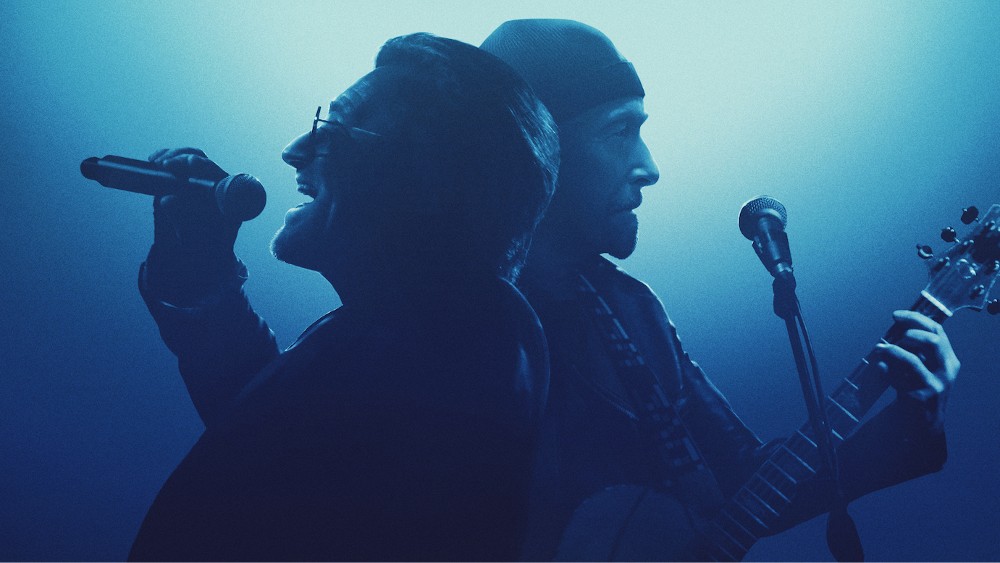
Back in March on St. Patrick’s Day, Disney+ released a 90-minute special called Bono and the Edge: A Sort of Homecoming with David Letterman, a concert performance film directed by Oscar-winner Morgan Neville (20 Feet from Stardom). It ties into the release of U2’s recent album, “Songs of Surrender,” in which the stalwart Irish rock group reworked many of their classic songs.
In December 2022, they performed a show of such reworkings at Dublin’s Ambassador Theater, which was intercut with interviews and other interstitials with talk show legend, David Letterman, to create something that’s likely to play well with fans of both.
Brian Riordan and Phil DeTolve of Levels Audio were tasked with putting all the different audio elements together and creating a mix in a much quicker timeframe than they normally might get for such an intricate live performance documentary special. Levels Audio is a mixing and audio post-production studio in L.A. that employees a collective of mixers and engineers to take on all sorts of projects, with NBC’s The Voice being one of their biggest clients.
Below the Line spoke with Riordan and DeTolve actually back in March for this interview, but it seemed apt to save it for Emmy voting time when the Television Academy’s sound branch is considering what to nominate. They also spoke about their ongoing sound work for the hit television competition show, The Voice, which employs quite a bit of the Levels team.
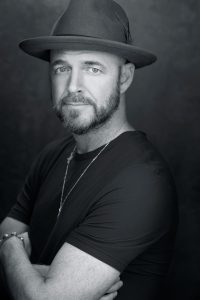
Below the Line: I was looking over your body of work, Brian, and I’m surprised that you have time to do anything else, including talk to me. I was going down your IMDB listing, and it just kept going and going and going…
Brian Riordan: [Laughs] It’s been a busy one, but we’re blessed to be working, that’s for sure.
BTL: I’m a sound engineer myself, so if you need to use any big sound engineering words, it won’t throw me off too much. I think that your department was one of the easier ones to switch to work-from-home when the pandemic hit, because you’re used to working by yourself anyway.
Riordan: Not for us. We had worked 100% here in our brick and mortar, so it was a big pivot for us. One of the few silver linings that came out of it is now we’re we’re working a little bit more hybrid like that, we continue to do so.
BTL: I know you did some stuff with David Letterman before. Was that how you got into this special, as well?
Riordan: No, they were completely siloed. Morgan Neville is a client of ours at Levels. He was the director on the film, and that’s how we got this. We did recently complete a stand-up series with Dave for Netflix, called That’s My Time, and a couple other little projects over the years, but those are pretty unrelated.
BTL: I’m curious about Levels Audio. How did Levels Audio start and how long has it been around?
Riordan: I started in the late ’90s — ’98, ’99 — it was just me. I was on Highland in Hollywood here, but up the street at a different building. I had a partner at the time, who was a financial investing partner, and I was the working partner. I was primarily doing commercial work, doing TV spots, and then on the side I did a lot with Disney Feature Animation, and then I also did quite a bit of music remixing for broadcast. This is before Autotune, so I was manually tuning a lot of vocals for a lot of young, up and coming pop artists. And then got into long form television, because there was a commercial SAG strike, and the advertising industry kind of went into a frozen state. I had to pivot quickly, and I just really focused on award shows. That was early 2000s, when there was literally like 50 award shows a year. It was wild. It was award shows about award shows.
BTL: There’s gotta be a lot more now than there was back then.
Riordan: I don’t know. It was wild. There were a lot of those that have been canceled since then, but that really parlayed into [us getting] American Idol in the early 2000s, and then everything sort of changed. That was the catalyst for a lot of growth, and hired a lot of mixers from other facilities that brought their clients. A lot of great mixers like Phil, next to me, who came up through the ranks, starting in the machine room and learned all the tricks of the trade and where all the bodies were buried. Phil and I are partners. We mixed together on this film.
BTL: I was curious about that. Were either of you guys in Dublin while they were shooting this special?
Riordan: No, I wish we were. It was shot kind of a guerilla style just before the end of last year. They went out there, didn’t quite exactly know what they were going to get and came back with a lot of footage and put together what I consider just a wonderful film.
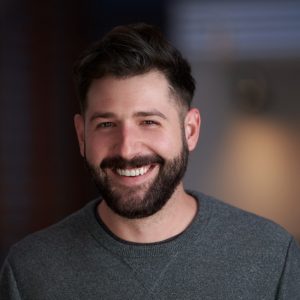
BTL: Phil, Brian mentioned you coming in, so have you been at Levels for a while now?
Phil De Tolve: I just celebrated my 13-year celebration here about a month ago. Like Brian said, I started in the machine room, learning from the ground up. I really didn’t start mixing until a few years after I’d begun, but in that time of learning the different aspects between cutting sound effects, recording [voiceover], and then also getting into music remixing, mixing performances for stage shows, and eventually prepping and predubbing for bigger mixers and then eventually started getting shows of my own and becoming a lead mixer in a lot of different genres as well from stand-up comedy to docuseries to reality, and even just straight up music performances. It’s been a fun ride.
BTL: Did you both work together on The Voice? Or do you tag-team or alternate episodes?
Riordan: We have. I am not actively on The Voice anymore, but still feel somewhat involved. There was a point in time where that show was one of my primary shows. We get blessed with the shows that go on for 10, 15, 20, 50 seasons, so eventually, other people become the leads on that. Phil’s been a lead on that show, for one.
De Tolve: It’s kind of the nature of that show. Some of these seasons will have upwards of three hours of programming a week, so sometimes, a two-hour episode and a one-hour episode. We have the ability where all of us can pitch in and work on separate parts, and then the lead mixer will bring it all together and do a final pass. That allows us to be able to handle that volume, where we can divide and conquer big volumes of work in really short periods of time.
Riordan: The majority of our mixers — if you look at our primary nine or 10 mixers – I don’t think anyone’s been here less than 10 years, between 10 and almost 20 years, most of the team. It’s really a group of mixers that really work together and know how each other mixes. We work as more of a team than the word even leads to believe.
BTL: Is The Voice ever live, or is it always taped in advance?
Riordan: It eventually goes live at the very tail end, but all the blind [auditions], the knockout rounds, those are all pretaped and remixed.
De Tolve: And then when it goes live, we still do mixing on contestant packages and roll-ins that they air during the live broadcast.
BTL: How early are you guys involved or pulled into something like this Homecoming special concert? How far in advance do you know, and how much communication do you have with the on-site recording and mixing team?
Riordan: It varies from project to project, but this one, I knew about it pretty much right when Morgan was getting ready to hop on a plane and go to Dublin. We were finishing up another project here. At that point, he started talking to me about it, and said, “Hey, I’ve got this thing coming up. It’s gonna be really cool. What do you think?” I was like, “We’re all in. Say no more.” That was the extent of it. We didn’t really know much more, and then we just [waited], because they went out, they shot it. We were not involved in the live shoot, and then they had to bring all the footage back, cut it all in offline. We [had] stuff delivered to us probably about two, three weeks before we finalized it. We were on it for about that long.
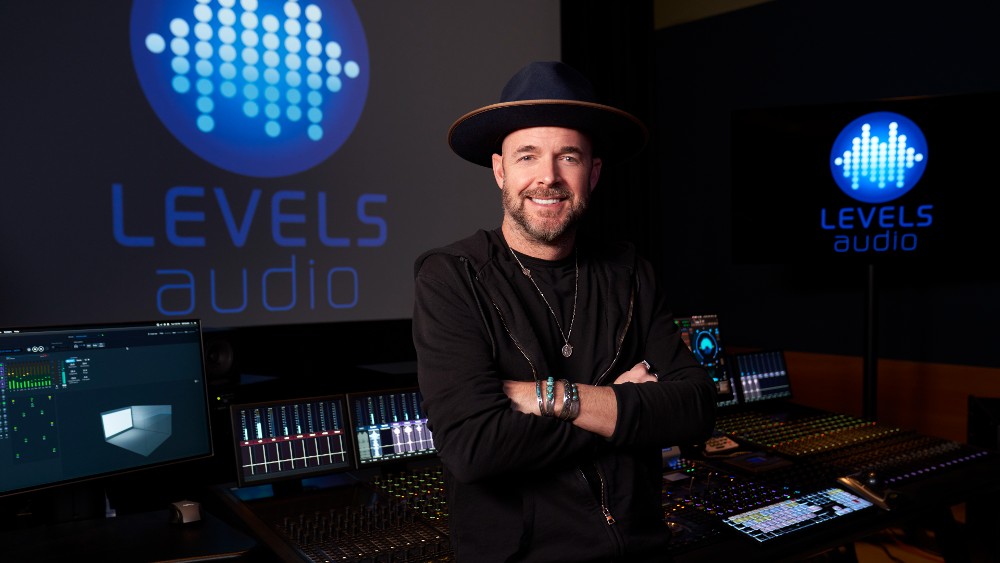
BTL: How many mixing and recording rooms do you have there at Levels Audio?
Riordan: We have nine mix stages in this building, and then we have six audio edit bays in the building, an ADR Foley stage, and then, we’ve got quite a few remote rooms now. Part of that is the post-COVID model change, but it’s allowed us to expand horizontally a little bit without more brick and mortars. A lot of home studios with our team working hybrid. We’ve probably got about 15 mix rooms going at any given time.
BTL: Are those all dedicated to a project like this, or is this maybe taking up four or five of those rooms?
Riordan: This project was just Phil and I, so we were working concurrently, or sort of tag teaming in two different mix rooms.
BTL: How do you guys divide up what needs to be done? Do you just start working on stuff as it comes in, or do you have a specific system for working?
De Tolve: Usually, when we start mixing, we don’t necessarily have everything at that time. In this case, I started dialogue cleanup, restoration, pre-dubbing and prepping for the mix with all the other elements. And then, as things get finished, like an effects edit would finish or backgrounds edit, I would fly those in and bounce them off Brian, so when he starts bringing in backgrounds and ambience, his dialogue is already in the pocket of where it needs to be, and he’ll mix against that.
Also, music, other than the performance, like score music, sometimes with change, or a composer cue would get updated. There’s a lot of updating and revising as we go along, up until the day of the playback. Sometimes, it’s a lot of back and forth where I’ll do something in one room, fly it in as he’s working, he’ll import it. We bob and weave as the stuff comes in and make it work. It’s very rare that everything is done when we begin mixing.
Riordan: In our world, we’re usually running hard against a deadline, and things become locked and unlocked and locked and unlocked. We’re chasing as fast as we can to keep up with how things are going with production. Fortunately, Morgan and his team are very buttoned up and things come in a lot tidier and well put together, then some others.
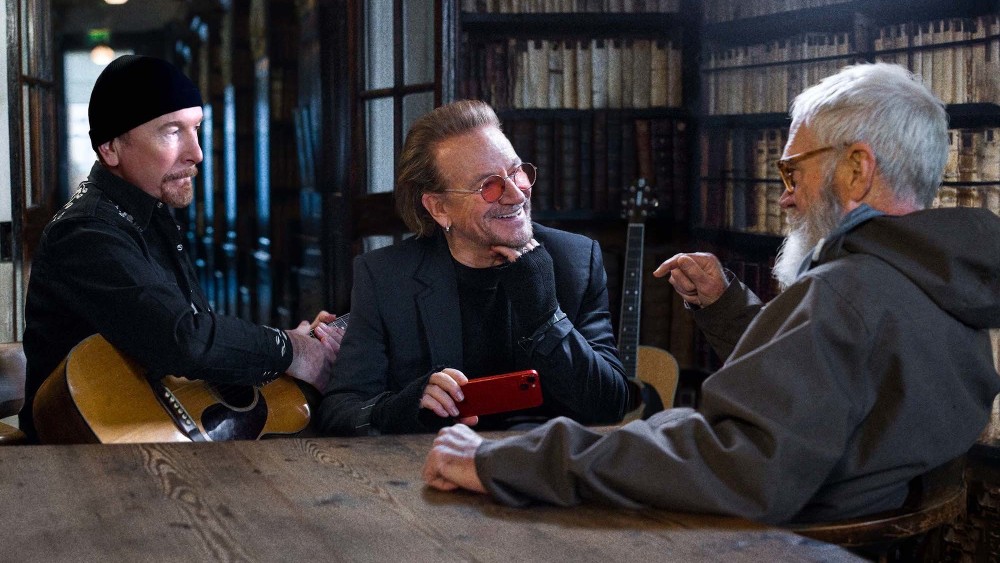
BTL: What are you getting from the Dublin shoot? Are you getting stems? Are you getting 24 individual tracks?
Riordan: Phil, you can jump in, but we’re getting all the raw audio shot from production in the AAF, basically coming out of the AVID, and then we’re also getting any music stems coming from the band.
De Tolve: And the full stack of ISOs that may or may not even be included, but at least we had the full breadth of everything that was recorded. In this particular film, when they’re playing in the theater, a lot of that was very well liked in the room, but then there’s also the run and gun aspect where they go off to the side and [have] side conversations and things like that. We’re blending in their production dialogue along with blending it into their performance tracks.
There’s always that battle of making sure it all matches and blends well and feels like one cohesive scene. From the stage stuff at the Ambassador, as well as even when Dave is just traveling, and he’s going through the airport, and going down by the ocean, by the pier and all that. We’ll have the camera audio, as well as all their [laveliers] and anything that they have recorded. Sometimes, there’ll be RF dropouts or static or cloth or whatever, and we’ll sometimes use different mics to replace it or blend it or edit it out or cheat it, however, but it just gives us that flexibility to make it as smooth and as professional as it can, without it being too problematic.
BTL: I also noticed you have moments where you’re mixing in some of the music, either what they’re playing live, but basically to transition between the performance and Dave’s stuff. Are you mixing all the music as a separate thing and then blending it in with everything else?
Riordan: Exactly. The music’s done separately then all the post side of it’s done afterwards. It’s the marriage of the two, like you just brought up. With that specific film, the goal was to keep it, more than most projects for us, that was really a special one where you really wanted to be in Dublin along for the ride. You wanted to be at the 40 foot when Dave was there. You wanted to be in the theater sitting in the first row. That’s what the goal was when we mixed it. How do we keep this thing as intimate as possible, but still be big and fun? Hopefully, we achieved it.
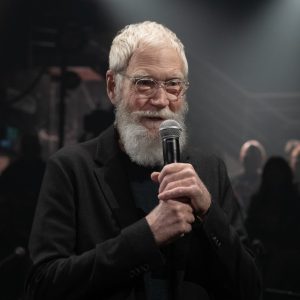
BTL: You must be working with Morgan’s editor or editors at the same time as they’re editing picture I’d imagine.
Riordan: Yeah, because of the deadline, color grading is usually happening simultaneous as audio finishing. On this one, we were really pushed up against that date, because the clever marketing of Disney+, dropping it on St. Patty’s Day, so we really had to turn this thing over pretty quickly.
BTL: I’m sure they had hundreds of hours of footage.
Riordan: Typically, I think, for most productions, a 90-minute doc feature would be about a year and a half. That sounds about right in terms of from beginning to end, and this was X amount of months. [laughs]
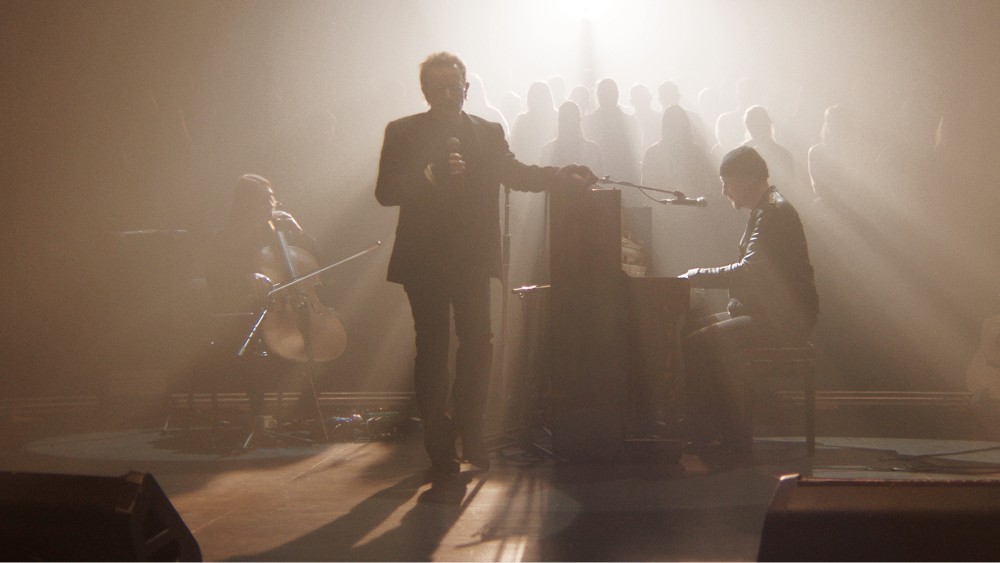
BTL: When you’re mixing the music stuff, does Bono or the Edge come over and offer their thoughts?
Riordan: The Edge was very involved in everything, as I think he typically is, but Alastair McMillan and Jacknife Lee, they’ve been mixing with the band, they were extremely involved in the stage stuff. But yeah, we were shipping stuff to them. They did not come out for the final mix review, but they were planning on it. I think schedules kind of collided, so we did everything remotely.
BTL: What do you use for that to communicate while mixing?
Riordan: The most common thing we use is Evercast.
BTL: Were you using that even before the pandemic?
Riordan: Nope, we were early adaptors right when New York started to shut down, we seeded a relationship with Evercast, and they were a small company back then. They were one of the few – I think them and the toilet paper companies and Zoom – those are about the only companies that did really well during the pandemic.
BTL: Thanks a lot, guys. Really appreciate the time. You did an amazing job on this, and I regret not having chance to see it in a theater with a bigger and better sound system. Hopefully, someday, they’ll be able to do some sort of theatrical thing.
Riordan: Yeah, I agree. I was very fortunate to be able to to watch it in a private screening. Bono and the Edge and Dave were there, and there was a Q & A with Morgan afterwards. We got to sit right next to him in the same row. It was Dave’s first time ever seeing the film. He had never seen it before. Bono and The Edge had because they were signing off on cuts, but they were all very moved by it. It was a cool experience. I agree. I wish it was playing even in just arthouse theaters.
Bono & The Edge: A Sort of Homecoming with David Letterman is available to stream on Disney+.





